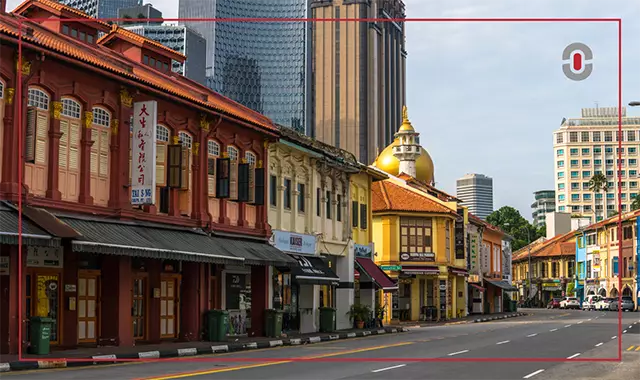Singapore is a thriving global business hub, renowned for its strategic location, dynamic economy, and multilingual society. However, if you’re considering entering the Singaporean market, there’s one important factor you can’t afford to overlook: language. With four official languages, Singapore’s linguistic diversity has profound implications for businesses, making localization not just a luxury, but a necessity. It’s not enough to simply “translate” your content when expanding into Singapore. You must localize it, tailoring your message to resonate with the local culture and speaking directly to your audience. In this guide, we will explore the primary languages used in Singapore, their official status, and how to approach Singapore translation and localization for successful business communication.
The Four Official Languages of Singapore
Singapore’s multilingual makeup is both unique and strategic. The country officially recognizes four languages: English, Mandarin Chinese, Malay, and Tamil. Each serves a different role in society, with English being the dominant force in business, education, and government. However, understanding how and when to leverage each language is key to building trust and fostering consumer loyalty.
1. English: The Business Powerhouse
English is Singapore’s de facto official language of business, government, and education. As a colonial legacy, it is spoken by virtually every Singaporean, from government officials to everyday citizens. The vast majority of business transactions, legal documents, and corporate communication are conducted in English, and it’s the primary language in which people interact with digital platforms, including websites and apps.
That being said, while English dominates, it’s crucial to recognize that Singaporeans might prefer localized experiences based on their native language or community. Multilingualism here means that companies must also consider the other Singapore official languages when localizing their products, services, and marketing content.
2. Mandarin Chinese: Key for Singapore’s Chinese Majority
With a significant Chinese population (approximately 75% of Singapore’s population), Mandarin holds a prominent place in both everyday life and business. The government has also made concerted efforts to encourage the use of Mandarin as the main Chinese dialect, especially in educational settings. Moreover, television and radio tend to use formal Mandarin.
For businesses looking to reach Singapore’s Chinese-majority audience, Mandarin is essential. China-Singapore relations are characterized by strong diplomatic, economic, and cultural ties. Both countries maintain a friendly and cooperative partnership, with significant collaboration in trade, investment, and regional security. As Singapore strengthens its economic ties with China, Mandarin’s influence continues to grow. So, hiring professionals who can translate Singaporean Mandarin is a crucial part of effective localization.
3. Malay: The National Language
Although Malay is the national language of Singapore, it holds a more symbolic role in the country’s identity. While not commonly used in business or daily conversations, Malay is important for ceremonial purposes and is widely recognized among Singaporeans of various ethnicities. There are some festivals celebrated by the Malay community, with the language playing a central role in traditional music, dance and poetry.
4. Tamil: The Thread to Indian People
With a significant Indian community, Tamil is the primary language spoken by many Singaporeans of Indian descent. However, Tamil is not as crucial in business contexts unless you’re catering specifically to the Indian community. While it’s important for cultural inclusivity, Tamil translation is not a priority for most companies unless they operate within this demographic.
The Role of “Singlish” and Its Cultural Significance
In addition to these four Singapore official languages, Singlish—a colloquial mix of English, Chinese, Malay, and Tamil—has become a hallmark of Singapore’s unique cultural identity. While Singlish is a beloved part of local culture, using it in business communication can be tricky. On one hand, it demonstrates authenticity and local understanding. On the other hand, overusing it in professional or formal settings may risk coming off as unprofessional.
When localizing your content for Singapore, be aware of Singlish’s cultural nuances. It’s best to avoid it in high-stakes communication (e.g., legal documents or formal business proposals) but consider incorporating it in informal settings, such as social media campaigns, where a more relaxed tone is appropriate.
The Importance of Localization
Consumer Behavior: Language impacts purchase decisions by making marketing messages more relatable, improving website usability through clearer navigation, and fostering trust by using familiar, culturally appropriate language. Localizing content makes consumers feel valued and more likely to buy.
Digital Marketing Impact: Localization boosts SEO by targeting local keywords, improving search rankings, and increasing visibility. In ad campaigns, using local languages and cultural references enhances engagement and conversions, while localized CTAs reduce friction and increase customer confidence.
Case Study/Example: Netflix successfully localized for Singapore by offering content in multiple languages and providing local movies and TV. This localization strategy boosted its subscriber base and engagement, as it resonated with Singapore’s diverse linguistic and cultural demographic. The platform’s tailored marketing and content led to improved retention and growth in the market.
Localization Tips: How to Speak Directly to Your Singaporean Audience
So, how can you effectively localize your brand for the Singaporean market? Here are a few essential tips:
1. Prioritize Language in Digital Content
Ensure your website, e-commerce platforms, social media channels, and apps are fully localized. English will likely be the default, but for a deeper connection with your audience, consider adding Mandarin Chinese or other languages where appropriate.
2. Be Mindful of Local Idioms and Sensitivities
If you plan on using Singlish in your campaigns, use it sparingly and ensure it aligns with your brand tone. Be careful with humor, slang, and cultural references—what might be acceptable in one context could fall flat or offend in another.
3. Hire Native Linguists or Localization Specialists
While machine translation tools may help with quick translations, it’s essential to work with native linguists or professional localization specialists to ensure your message sounds authentic and resonates with local audiences.
4. Optimize SEO for Local Search
Tailor your SEO strategy to include localized keywords and phrases specific to Singaporean users. Find and set the most commonly used keywords in order to rank higher in local search queries.
5. Design for Language Inclusivity
Consider integrating language toggles on your digital platforms to allow users to easily switch between English, Mandarin, Malay, and Tamil. A website that accommodates language preferences offers a more inclusive and user-friendly experience.
How to localize for Singapore while maintaining scalability for regional markets (Malaysia, Indonesia, etc.)
- Language Flexibility: Use core languages (e.g., English, Mandarin, Malay, Tamil for Singapore) with adaptable content to suit local preferences.
- Cultural Sensitivity: Customize content to reflect cultural nuances while maintaining a unified brand identity across the region.
- SEO and Keywords: Optimize with local keywords for each market but use a consistent SEO structure to improve visibility regionally.
- Design and UX: Implement a flexible, responsive design that accommodates different languages and text lengths across devices.
- Payment Methods: Offer localized payment options but maintain a common back-end for ease of scalability.
- Customer Support: Provide multilingual support with scalable tools, like AI chatbots, that cater to local languages.
Common Localization Mistakes to Avoid
- Ignoring Mandarin: Assuming that English alone will suffice can result in missed opportunities with a large portion of the population.
- Relying on Machine Translation: While AI-powered translation tools can be convenient, they often miss contextual and cultural subtleties. Always have a human review your translations.
- Cultural Missteps: Misusing Singlish or using phrases that may be offensive can severely damage your brand’s reputation. Always research and test before launching a campaign.
- Underestimating the role of UX: A website or app that doesn’t allow users to switch languages or experience content tailored to their cultural preferences will frustrate potential customers.
Key Takeaways
English and Mandarin are the most important languages in Singapore for localization, with English being essential for business and Mandarin key for reaching Singapore’s Chinese-majority population. Localization itself goes beyond translation. It requires cultural sensitivity, local idioms, and a keen understanding of consumer behavior. Avoid cultural missteps and optimize digital content to cater to Singapore’s multilingual landscape. Review your content, consider hiring local experts, and begin localizing your digital platforms for a successful market entry.
Ready to expand into Singapore? Start with the right language strategy. Request a quote today at https://www.1stopasia.com/request-a-quote/.

